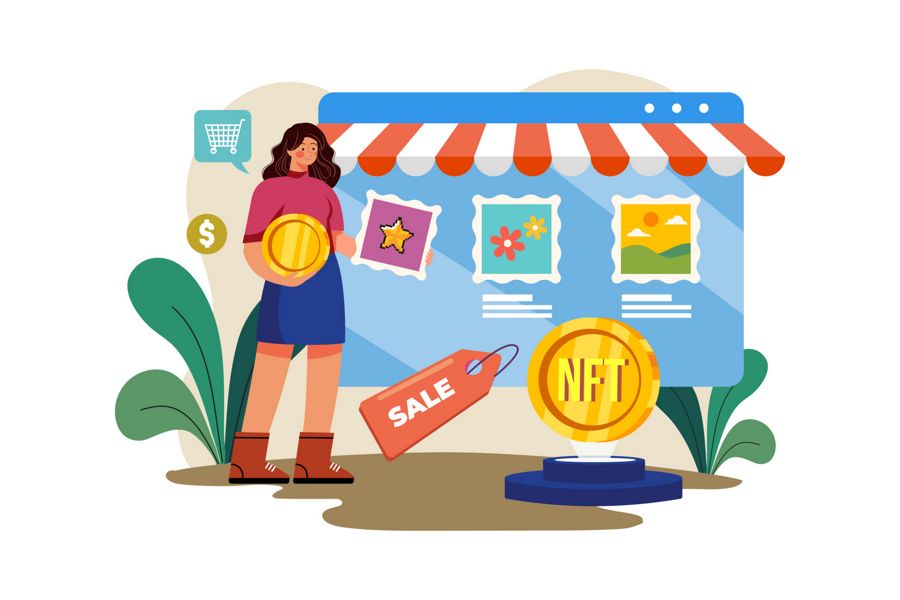Non-Fungible Tokens (NFTs) have gained significant attention and popularity in recent years, revolutionizing the way we perceive and trade digital assets. NFT marketplaces serve as the primary platforms for buying, selling, and trading these unique digital collectibles, artworks, and virtual assets. Building a successful NFT marketplace requires careful consideration of various elements to provide a seamless and engaging user experience while fostering a thriving community of creators and collectors. In this article, we will explore the six key elements that contribute to the success of an NFT marketplace.
User-Friendly Interface and Intuitive Navigation
A user-friendly interface is paramount to attract and retain users on an NFT marketplace. The platform should feature a clean and intuitive design, making it easy for users to navigate, search, and discover NFTs. Intuitive filtering options, advanced search functionalities, and well-organized categories ensure that users can find their desired NFTs effortlessly.
- Streamlined onboarding process with clear instructions for creating accounts and connecting wallets.
- Responsive and visually appealing design optimized for different devices and screen sizes.
- Intuitive navigation with clear menus, search bars, and filters for browsing NFT collections.
Robust Smart Contract Infrastructure
The backbone of any NFT marketplace is its smart contract infrastructure. It is essential to build a robust and secure smart contract ecosystem that ensures transparent ownership, seamless transactions, and proper royalty distribution. Key considerations for the smart contract infrastructure include:
- Compliance with NFT standards like ERC-721 or ERC-1155.
- Efficient and secure transaction processing, including minting, listing, buying, and transferring NFTs.
- Integration with popular blockchain networks like Ethereum or other scalable and cost-effective alternatives.
- Comprehensive smart contract auditing to identify and mitigate potential vulnerabilities.
Strong Community and Creator Support
A successful NFT marketplace thrives on an active and engaged community of creators and collectors. Implementing features that foster community interaction, collaboration, and support can significantly enhance the marketplace’s success. These features may include:
- Social media integration and sharing capabilities to promote NFTs and artists’ work.
- Community forums or chat functionalities for creators, collectors, and enthusiasts to connect and exchange ideas.
- Special events, auctions, or collaborations to generate excitement and reward active community participation.
- Tools and resources to support creators, such as tutorials, guidelines, and marketing support.
Curation and Quality Control
Curation plays a crucial role in maintaining the quality and reputation of an NFT marketplace. Implementing robust curation mechanisms ensures that only high-quality and authentic NFTs are listed, enhancing trust among collectors and investors. Consider incorporating the following elements:
- Thorough review and verification processes for submitted NFTs to prevent counterfeit or plagiarized content.
- Quality control measures to ensure compliance with community guidelines and standards.
- Featured sections or curated collections to highlight exceptional or trending NFTs.
- Ratings, reviews, or feedback systems to enable users to provide input on the quality and authenticity of NFTs.
Secure and Transparent Transactions
Security and transparency are fundamental to the success of any NFT marketplace. Users should feel confident that their transactions are secure, and the details of each transaction are recorded on the blockchain. Key aspects of secure and transparent transactions include:
- Integration with secure and reliable wallet providers for seamless transaction processing.
- Clear and transparent fee structures, including listing fees, transaction fees, and royalties.
- Immutable transaction records on the blockchain, ensuring transparency and traceability.
- Robust security measures, including two-factor authentication, encryption, and anti-fraud mechanisms.
Scalability and Future-Proofing
As NFTs continue to gain popularity, scalability becomes a crucial element for a successful marketplace. The platform should be capable of handling increasing user traffic, growing NFT collections, and evolving technology trends. Consider the following factors for scalability and future-proofing:
- Scalable infrastructure capable of handling high transaction volumes and network congestion.
- Continuous development and updates to incorporate new features and adapt to changing market demands.
- Interoperability with other NFT marketplaces or blockchain ecosystems to facilitate cross-platform trading and liquidity.
- Integration with emerging technologies like decentralized storage solutions or Layer 2 scaling solutions.
Conclusion
Building a successful NFT marketplace requires careful attention to various elements that contribute to an exceptional user experience, strong community engagement, and robust technical infrastructure. By focusing on user-friendly design, robust smart contracts, community and creator support, curation and quality control, secure transactions, and scalability, you can create an NFT marketplace that stands out in the competitive landscape. Embrace innovation, adapt to evolving trends, and prioritize user satisfaction to foster the growth and success of your NFT marketplace in this exciting and rapidly evolving digital asset ecosystem.
